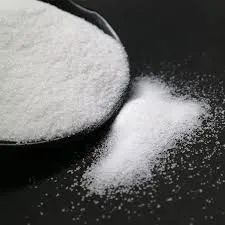Types of Chlorine Used in Water Treatment
Water treatment is a crucial process that ensures safe drinking water and the proper functioning of wastewater systems. Among various disinfectants utilized in this field, chlorine stands out as one of the most widely used agents. Chlorine has been effectively employed in water treatment for over a century, and its various forms each have their own unique properties and applications. This article explores the different types of chlorine used in water treatment, along with their advantages and considerations.
1. Chlorine Gas
Chlorine gas (Cl₂) is one of the oldest forms of chlorine used in water treatment. It is typically delivered in pressurized cylinders and can be injected directly into water. Chlorine gas is highly effective as a disinfectant; it rapidly kills bacteria, viruses, and other pathogens in water. One of its key advantages is its powerful oxidation potential, which allows it to neutralize several organic contaminants in the water.
However, the use of chlorine gas comes with safety concerns. It is a toxic, corrosive gas that poses significant health risks if not handled properly. Water treatment facilities using chlorine gas must adhere to stringent safety protocols, including proper ventilation and the availability of emergency equipment to deal with leaks or exposure. Additionally, the process of gas injection requires skilled personnel and specific equipment, making it less user-friendly compared to other forms of chlorine.
2. Sodium Hypochlorite
Sodium hypochlorite (NaOCl), commonly known as bleach, is another popular form of chlorine used in water treatment. It is typically available in a liquid form and is easier to handle than chlorine gas. Sodium hypochlorite is widely used for both disinfection and odor control in municipal water treatment plants and swimming pools. Additionally, it can be generated on-site, which reduces storage and transportation challenges associated with hazardous materials.
One of the major advantages of sodium hypochlorite is its effectiveness in killing a wide range of microorganisms. Furthermore, it breaks down into relatively harmless byproducts, primarily saline, once its disinfecting work is done. However, sodium hypochlorite is unstable and degrades over time, especially when exposed to heat and light, necessitating careful storage.
types of chlorine used in water treatment

3. Calcium Hypochlorite
Calcium hypochlorite (Ca(OCl)₂), also known as chlorine powder or solid chlorine, is another widely used chlorine compound. It is particularly advantageous for water treatment due to its stability and effectiveness as a disinfectant. Calcium hypochlorite is commonly used in swimming pools and small community water systems, providing a reliable source of chlorine without the risks associated with chlorine gas.
Calcium hypochlorite is usually available in granulated or tablet form and offers convenience in handling and storage. When dissolved in water, it releases chlorine, effectively killing microorganisms. Additionally, it has a longer shelf life than sodium hypochlorite, making it a preferred choice in situations where long-term storage is necessary. However, calcium hypochlorite can be corrosive and requires careful handling.
4. Chlorine Dioxide
Chlorine dioxide (ClO₂) is a powerful disinfectant that is used in water treatment, particularly for disinfection and taste and odor control. Unlike the other forms of chlorine mentioned, chlorine dioxide is not a chlorinated compound and does not form harmful byproducts such as trihalomethanes (THMs) when used in water treatment. It is effective at lower concentrations and can kill a wide range of pathogens.
However, the generation of chlorine dioxide requires specialized equipment, and its use is often more complex than that of traditional chlorine compounds. Due to its properties, chlorine dioxide is gaining popularity in advanced water treatment systems, particularly in municipal drinking water and industrial applications.
Conclusion
In conclusion, the various types of chlorine used in water treatment each have their distinct characteristics and applications. From chlorine gas and sodium hypochlorite to calcium hypochlorite and chlorine dioxide, each form offers unique advantages based on specific treatment needs. Understanding these differences is essential for water treatment professionals to make informed decisions on the most effective and safe disinfectant for their systems. Ultimately, the goal remains the same to provide safe, clean, and disinfected water for public health and environmental protection.

